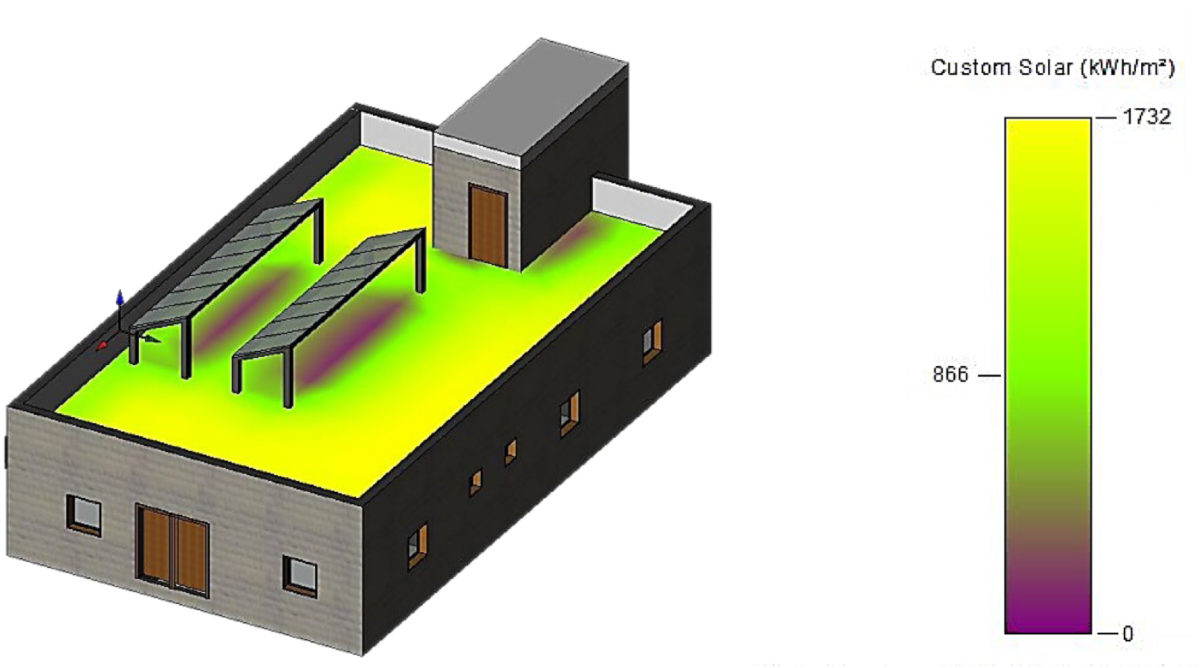An international group of researchers has investigated how rooftop photovoltaics may act as a shading and cooling agent for uninsulated buildings in moderate dry and warm climate zones.
Their work sought to assess, in particular, how a rooftop PV array may potentially decrease the cooling burden for an average middle-income household dwelling in Amman, Jordan. They used the IES-VE software, which is commonly used to create and capture performance information during the design, commissioning, and operation of a building in order to analyze the thermos-physical performance of the uninsulated roof under the shade of a PV array. “The essential aim was to minimize cooling load while observing the difference in the heating load after installing the PV system as a shading device only, without accounting for the electrical generation of the PV system and maintaining thermal comfort under new circumstances,” the research team specified.
The Revit 2020 software for building design was used to build the baseline simulation model. Their analysis was applied to a single-storey residential building with an overall size of approximately 180 m2. “The building is oriented so that the axis of rotation is aligned to the south-north direction,” the academics explained. “There is no shade from the outside or elements that block the sun from entering the house, which allows a significant amount of energy to pass through.”
The research project took place during the heating period spanning November 2021 to April 2021 and the cooling period from May 2021 to October 2021. The PV system was designed to cover 4.9% of the roof surface area. The total installed power of the building was 480 kW.
Through their simulation, the scientists found that the shade effect of PV panels may reduce the building's cooling demand by 10.87%, which means a lower power consumption of 136.6 kWh for the cooling months. “Conversely, PV panels increased the heating load in the winter by 3.8%, which means that the rise in heating loads in heating months was 175.3%,” they also explained. “A rooftop PV system provides a greater understanding of the heating, ventilation, and air conditioning (HVAC) energy demand variance in buildings which is critical in modern architecture.
Their findings were presented in the paper Rooftop photovoltaic system as a shading device for uninsulated buildings, published in Energy Reports. The research group comprises scientists from German Jordanian University, the An-Najah National University in Palestine, and the University of Almeria in Spain. “The scope of this work can be expanded to include other climate areas, types of roof construction, the electrical integration of a PV system to estimate overall energy consumption and a comparison should be conducted between horizontally mounted photovoltaics panels and tilted panels in terms of electrical generation and shading effect,” they concluded.
This content is protected by copyright and may not be reused. If you want to cooperate with us and would like to reuse some of our content, please contact: editors@pv-magazine.com.




Why would they study un-insulated buildings? Are any new buildings un-insulated? This seems like a very specialized study that’s trying to sound like generalized information about solar panel effects.
Hi,
Indeed, it’s a valid point. The study focuses on uninsulated buildings because, in Jordan, a significant portion of existing structures lack proper insulation. While newer constructions may incorporate insulation, many existing roofs remain uninsulated, which is why this research is particularly relevant for understanding the implications of solar panel installation in such prevalent building types. It aims to address the specific challenges posed by uninsulated buildings in the context of solar panel deployment, contributing valuable insights for sustainable energy planning and infrastructure development in Jordan.
Aiman